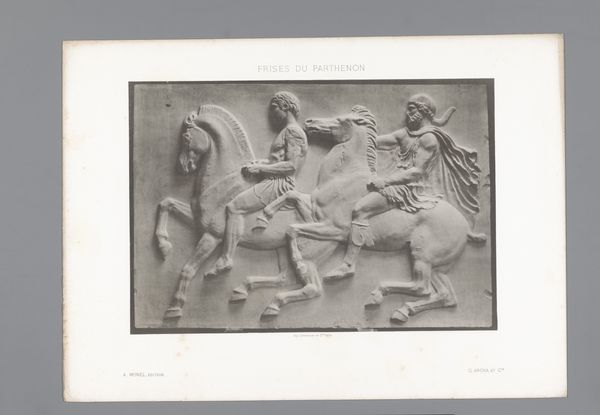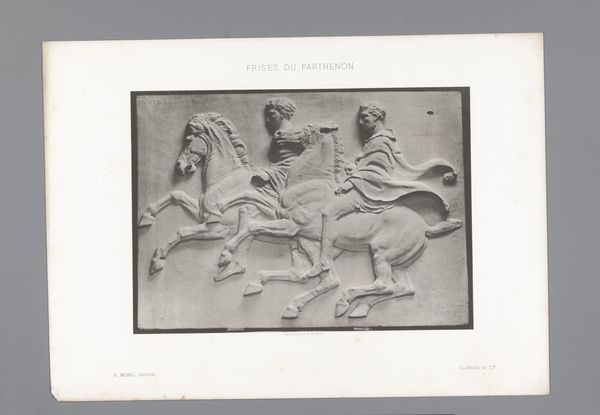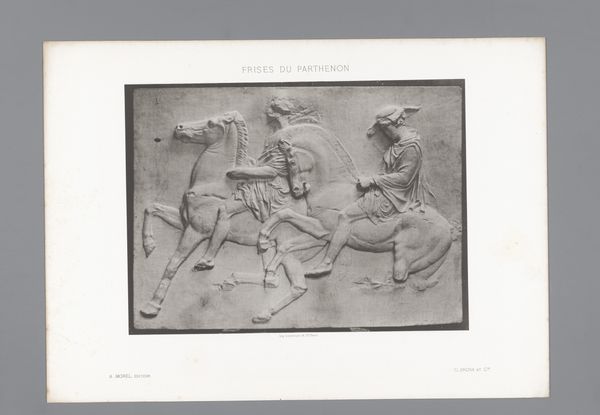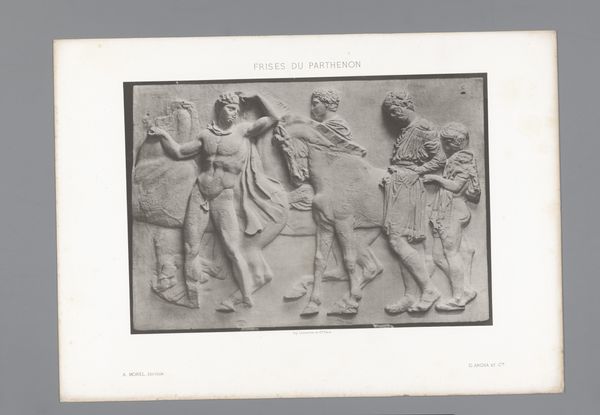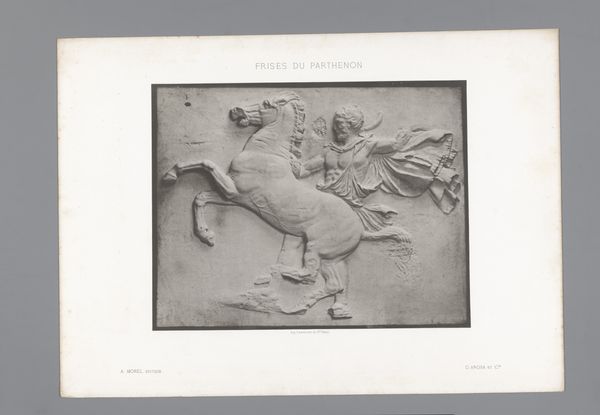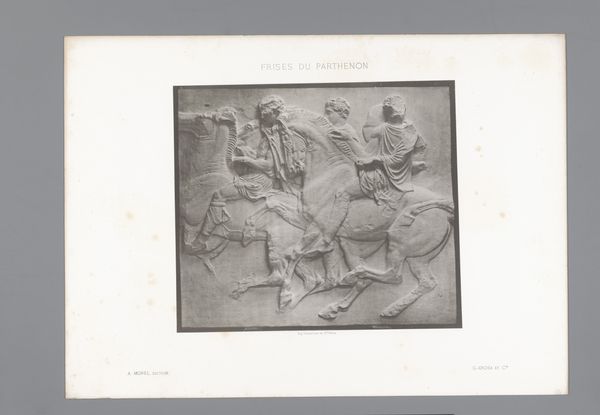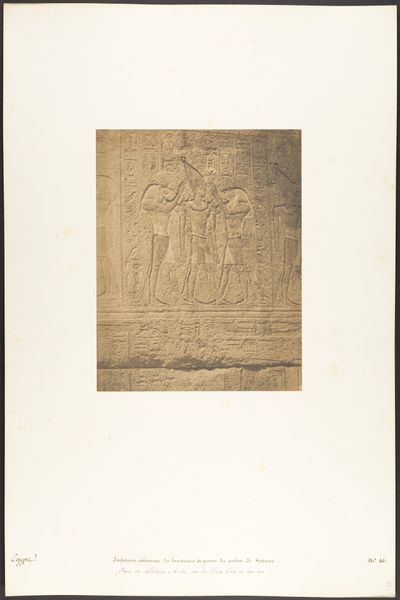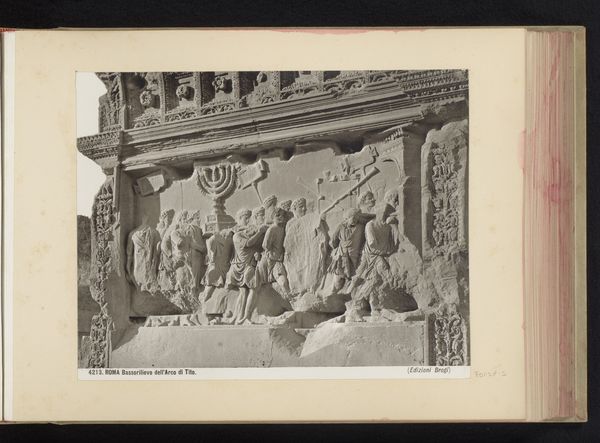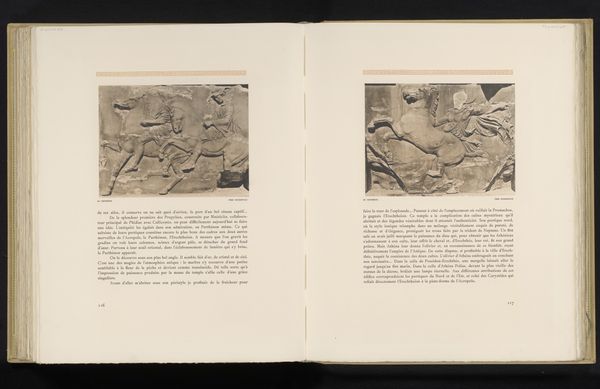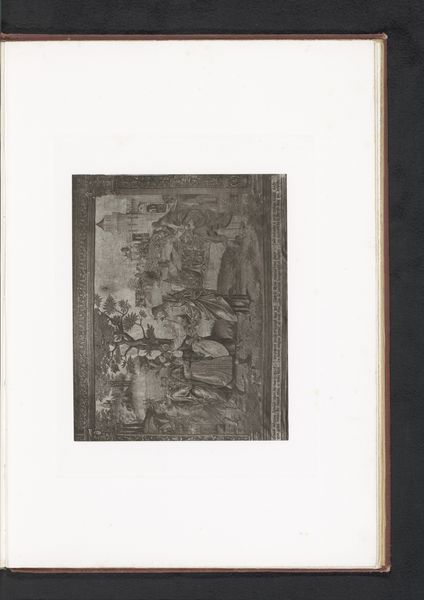
Deel van het fries van het Parthenon in Athene, afgebeeld twee ruiters before 1868
0:00
0:00
print, relief, marble, engraving
# print
#
greek-and-roman-art
#
relief
#
landscape
#
figuration
#
ancient-mediterranean
#
history-painting
#
marble
#
engraving
Dimensions: height 232 mm, width 334 mm
Copyright: Rijks Museum: Open Domain
Here we see a photograph of a section of the Parthenon frieze in Athens, captured by G. Arosa et Cie. The frieze depicts a dynamic scene of horsemen, their forms rendered with a classical attention to anatomical detail and fluid movement. The composition relies on a horizontal flow, guiding the eye from left to right. Note how the figures and horses are closely packed, creating a sense of energetic progression. This tight arrangement and the shallow depth of the relief serve to flatten the space, emphasizing the surface and pattern over depth. The material itself, presumably marble, is transformed by light and shadow, giving texture that enlivens the surface. Considering this work through a structuralist lens, one might see the frieze as a series of signs representing the idealized order and values of Athenian society. The formal qualities, such as the rhythmic repetition of figures and the controlled dynamism, reinforce a sense of harmony and civic pride. The frieze embodies not just aesthetic beauty but also cultural and philosophical ideals, reflecting the Parthenon as a site of ongoing interpretation.
Comments
No comments
Be the first to comment and join the conversation on the ultimate creative platform.
